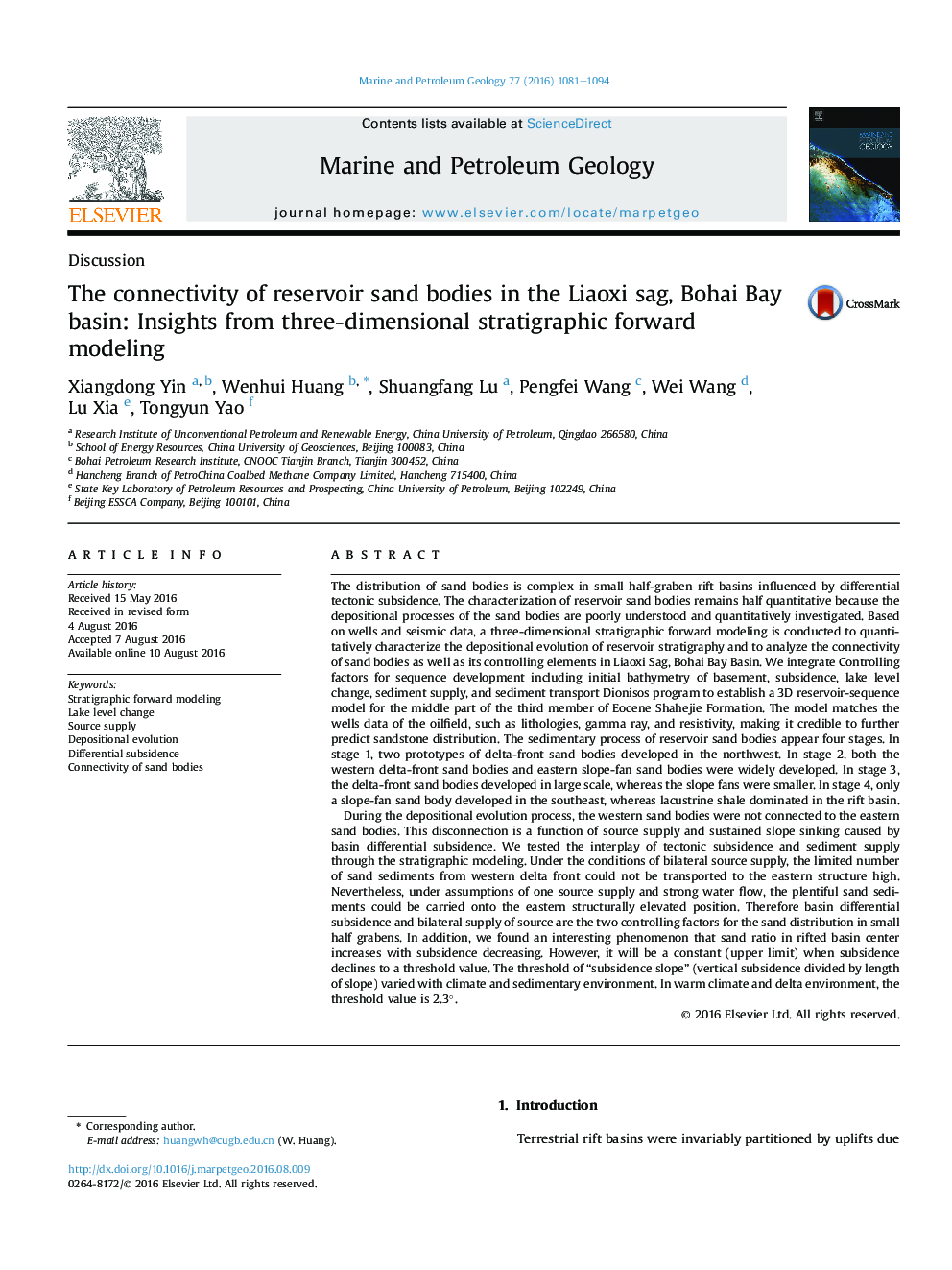| کد مقاله | کد نشریه | سال انتشار | مقاله انگلیسی | نسخه تمام متن |
|---|---|---|---|---|
| 6434662 | 1637150 | 2016 | 14 صفحه PDF | دانلود رایگان |

- A reservoir stratigraphic forward model is firstly established.
- Depositional quantitative model and sand evolution in reservoir are figured out.
- The western sand bodies are not connected to the east sand bodies.
- The reason of disconnectivity is differential subsidence and bilateral source.
- The sand ratio in rifted basin center is a function of subsidence and climate.
The distribution of sand bodies is complex in small half-graben rift basins influenced by differential tectonic subsidence. The characterization of reservoir sand bodies remains half quantitative because the depositional processes of the sand bodies are poorly understood and quantitatively investigated. Based on wells and seismic data, a three-dimensional stratigraphic forward modeling is conducted to quantitatively characterize the depositional evolution of reservoir stratigraphy and to analyze the connectivity of sand bodies as well as its controlling elements in Liaoxi Sag, Bohai Bay Basin. We integrate Controlling factors for sequence development including initial bathymetry of basement, subsidence, lake level change, sediment supply, and sediment transport Dionisos program to establish a 3D reservoir-sequence model for the middle part of the third member of Eocene Shahejie Formation. The model matches the wells data of the oilfield, such as lithologies, gamma ray, and resistivity, making it credible to further predict sandstone distribution. The sedimentary process of reservoir sand bodies appear four stages. In stage 1, two prototypes of delta-front sand bodies developed in the northwest. In stage 2, both the western delta-front sand bodies and eastern slope-fan sand bodies were widely developed. In stage 3, the delta-front sand bodies developed in large scale, whereas the slope fans were smaller. In stage 4, only a slope-fan sand body developed in the southeast, whereas lacustrine shale dominated in the rift basin.During the depositional evolution process, the western sand bodies were not connected to the eastern sand bodies. This disconnection is a function of source supply and sustained slope sinking caused by basin differential subsidence. We tested the interplay of tectonic subsidence and sediment supply through the stratigraphic modeling. Under the conditions of bilateral source supply, the limited number of sand sediments from western delta front could not be transported to the eastern structure high. Nevertheless, under assumptions of one source supply and strong water flow, the plentiful sand sediments could be carried onto the eastern structurally elevated position. Therefore basin differential subsidence and bilateral supply of source are the two controlling factors for the sand distribution in small half grabens. In addition, we found an interesting phenomenon that sand ratio in rifted basin center increases with subsidence decreasing. However, it will be a constant (upper limit) when subsidence declines to a threshold value. The threshold of “subsidence slope” (vertical subsidence divided by length of slope) varied with climate and sedimentary environment. In warm climate and delta environment, the threshold value is 2.3°.
Journal: Marine and Petroleum Geology - Volume 77, November 2016, Pages 1081-1094